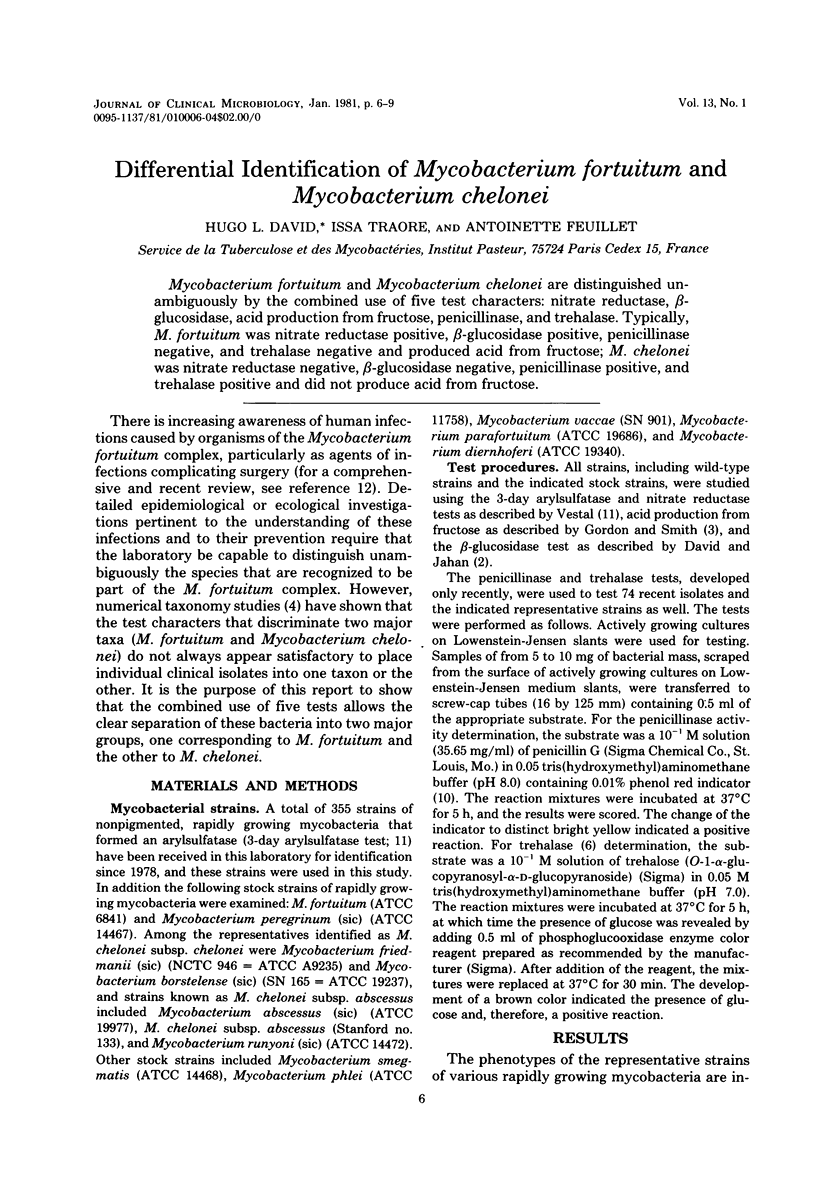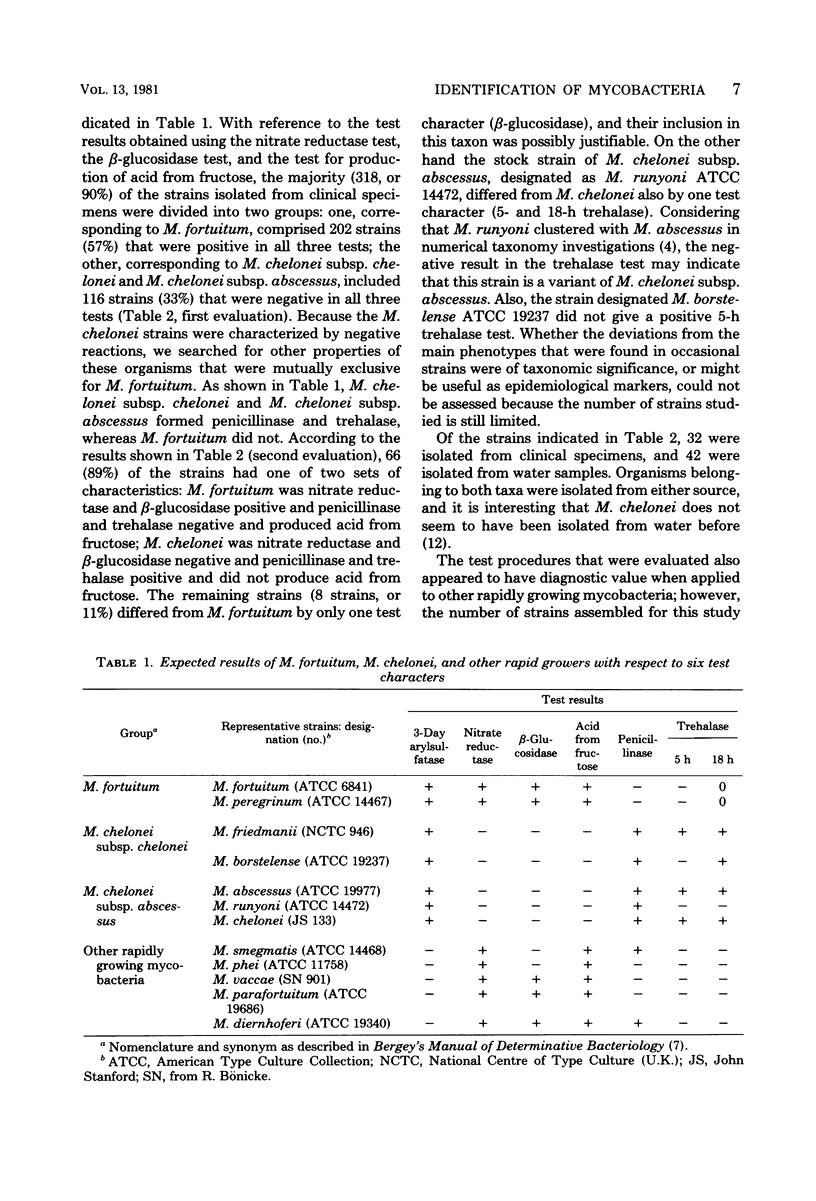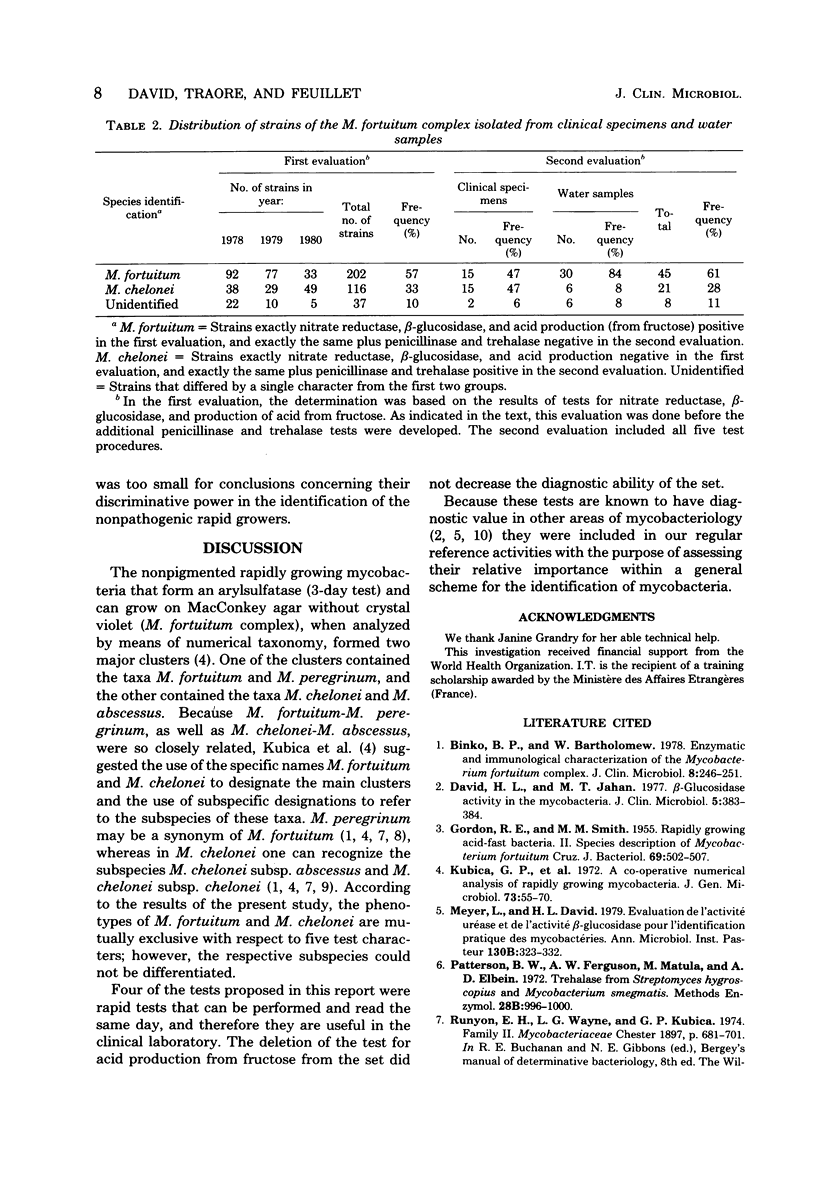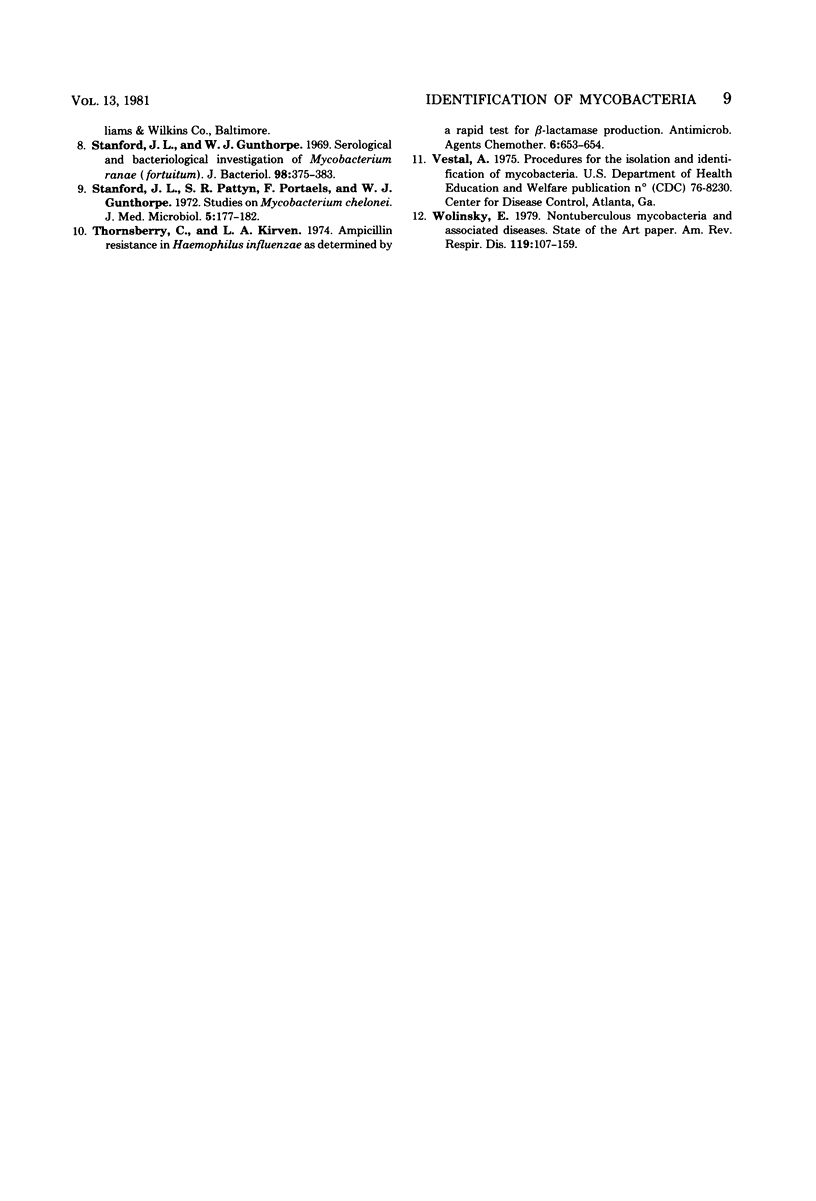Abstract
Mycobacterium fortuitum and Mycobacterium chelonei are distinguished unambiguously by the combined use of five test characters: nitrate reductase, beta-glucosidase, acid production from fructose, penicillinase, and trehalase. Typically, M. fortuitum was nitrate reductase positive, beta-glucosidase positive; M. chelonei was nitrate reductase negative, beta-glucosidase negative, penicillinase positive, and trehalase positive and did not produce acid from fructose.
Full text
PDF



Selected References
These references are in PubMed. This may not be the complete list of references from this article.
- Binko B. P., Bartholomew W. R. Enzymatic and immunological characterization of the Mycobacterium fortuitum complex. J Clin Microbiol. 1978 Aug;8(2):246–251. doi: 10.1128/jcm.8.2.246-251.1978. [DOI] [PMC free article] [PubMed] [Google Scholar]
- David H. L., Jahan M. T. beta-Glucosidase activity in mycobacteria. J Clin Microbiol. 1977 Mar;5(3):383–384. doi: 10.1128/jcm.5.3.383-384.1977. [DOI] [PMC free article] [PubMed] [Google Scholar]
- GORDON R. E., SMITH M. M. Rapidly growing, acid fast bacteria. II. Species' description of Mycobacterium fortuitum Cruz. J Bacteriol. 1955 May;69(5):502–507. doi: 10.1128/jb.69.5.502-507.1955. [DOI] [PMC free article] [PubMed] [Google Scholar]
- Kubica G. P., Baess I., Gordon R. E., Jenkins P. A., Kwapinski J. B., McDurmont C., Pattyn S. R., Saito H., Silcox V., Stanford J. L. A co-operative numerical analysis of rapidly growing mycobacteria. J Gen Microbiol. 1972 Nov;73(1):55–70. doi: 10.1099/00221287-73-1-55. [DOI] [PubMed] [Google Scholar]
- Meyer L., David H. L. Evaluation de l'activité uréase et de l'activité beta-glucosidase pour l'identification pratique des mycobactéries. Ann Microbiol (Paris) 1979 Oct;130B(3):323–332. [PubMed] [Google Scholar]
- Stanford J. L., Gunthorpe W. J. Serological and bacteriological investigation of Mycobacterium ranae (fortuitum). J Bacteriol. 1969 May;98(2):375–383. doi: 10.1128/jb.98.2.375-383.1969. [DOI] [PMC free article] [PubMed] [Google Scholar]
- Stanford J. L., Pattyn S. R., Portaels F., Gunthorpe W. J. Studies on Mycobacterium chelonei. J Med Microbiol. 1972 May;5(2):177–182. doi: 10.1099/00222615-5-2-177. [DOI] [PubMed] [Google Scholar]
- Thornsberry C., Kirven L. A. Ampicillin resistance in Haemophilus influenzae as determined by a rapid test for beta-lactamase production. Antimicrob Agents Chemother. 1974 Nov;6(5):653–654. doi: 10.1128/aac.6.5.653. [DOI] [PMC free article] [PubMed] [Google Scholar]
- Wolinsky E. Nontuberculous mycobacteria and associated diseases. Am Rev Respir Dis. 1979 Jan;119(1):107–159. doi: 10.1164/arrd.1979.119.1.107. [DOI] [PubMed] [Google Scholar]


